Our country is home to many indigenous crops. However, the potentials of some of these crops still remain unexplored. A United Nations projection reveals that in 2050, world population is expected to reach 9 billion. Achieving food security, especially among the developing countries, is a constant challenge which needs to be dealt with. To help contribute in addressing this issue, we need to make the most out of what is considered to be underutilized.
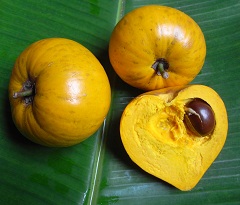
A fruit with a future
The International Centre for Underutilised Crops reports Pouteria, a genus of tropical fruit trees, as one of the fruits with good prospects in the future. Among the 188 known species under this genus, three have been identified as having commercial importance and potential. One of them is Pouteria campechiana.
Believed to have originated from West Indies in tropical America, it was introduced to many tropical countries, including the Philippines during the 1900s. Locally known as canistel, it goes by its more popular name tiesa. Its texture is likened to the yolk of a hard-boiled egg, giving it its other common name – eggfruit. Though cultivated in many home gardens, it is still one of the fruits in our country which go unnoticed. It was identified in the book of Dr. Roberto E. Coronel as one of the “Important and Underutilized Edible Fruits of the Philippines”.
The medium-sized evergreen tiesa tree grows up to 7-12 meters tall with trunk width reaching up to 1 meter. It has long, slender, green and glossy leaves which are clustered at the end of the branches. It has fragrant white flowers which are bunched on leaf axils. Usually smooth and glossy, its fruits are nearly round to oblong in shape with a nippled tip and measures 9 to 12 centimeters in length. Though it has a semi-woody yellow skin on the outside, a soft, sweet, yellow to orange flesh can be found on the inside of the ripe fruit, containing about 1 to 4 large and shiny dark brown seeds.
Most trees in the country are grown from seedlings. Just recently, a seedling selection by Dr. Coronel has been registered as a tiesa variety named “Saludo”.
In the Philippines, tiesa adapts well from sea level to medium altitudes in areas with a short to long rainy season. Propagation may be done through seeds with fifty-day germination, or through cleft grafting. Fruits are best harvested from August to January when the fruits are fully matured and ripened. In general, plant establishment to plant maturity takes about 1 to 3 years. Most of the time, the tree is vigorous and healthy as it has no known serious pests and diseases.
Benefits and potentials
Whether it is for industrial, medicinal, or nutritional value – tiesa has a lot of useful products which can be developed from the fruit to the tree itself. Tiesa trees do not only make a good shade provider and shelter. Its abundant white, gummy latex is collected and marketed for making chewing gums while the hard and fairly heavy timber is suitable for furniture and construction purposes.
More of its potentials can be harnessed. It was reported to be a highly suitable species for reforestation. Additionally, the trees can also be incorporated in agroforestry systems such as homestead gardens, orchards, or as shade trees in coffee plantations where it can contribute to crop diversification, soil improvement and in preventing soil erosion.
Aside from the tree itself, other parts are valued for their medicinal properties. In Mexico for instance, the astringent effects produced from a decoction of its bark are taken to reduce fever. Alternatively, it is used and applied to treat skin diseases in Cuba. Its seeds are also found useful as remedy for ulcers while the seed oils are believed to prevent hair loss.
When peeled, the edible fruit is usually eaten raw. Some add salt, pepper, lime, or mayonnaise to give it a little extra flavor. It is mostly used in the preparation of favorite desserts such as sherbet, ice cream, milkshake, pancake, cupcake, and jam.
One can have a taste of its rich fruity flavor while enjoying the health benefits it can give. An analysis for nutritional properties has shown that tiesa is an excellent source of carotene (provitamin A) which is needed for healthy eyesight. It also has fair levels of carbohydrates, niacin, ascorbic acid, iron, protein, calcium, phosphorus, thiamin, and riboflavin.
Aside from those mentioned, tiesa is also found to be a fruit containing high antioxidant properties. In a study entitled “Functional components, alkaloid and saponin contents and antioxidant activity of Philippine grown fruits”, tiesa showed relatively high amounts of total phenols and antioxidants. These are nutritionally beneficial compounds that naturally occur in fruits and vegetables that act as the body’s shield and armor against illnesses and diseases, thus strengthening the body’s immune system and keeping us healthy and strong.
Meanwhile, a BAR-funded project entitled “Antioxidant Potential and Components of Philippine Vegetables and Fruits” evaluated tiesa and other fourteen fruits and vegetables grown in the country for the natural antioxidant properties they possess. Based on the results of this study, it is interesting to note that high antioxidant activities are present in the non-edible portion of tiesa, specifically on its seeds.
Even if this fruit crop has not been included as one of the species with development potential for economic utilization at the present time, its high nutritional value may spur interest and encourage wider growth and development in the future. Intensive promotion on its food value, as well as research on how to further exploit the fruit, are needed to realize the crop’s full potentials.
———-
Sources:
1. http://www.hort.purdue.edu/newcrop/morton/canistel.html
2. Pouteria: Fruits for the future. Factsheet produced by the International Centre for Underutilised Crops. Retrieved from http://www.cropsforthefuture.org/publication/Factsheets/Factsheet-pouteria.pdf
3. Species without current development potential for economic uses. Retrieved from http://www.fao.org/docrep/004/ab777e/ab777e06.htm
4. Hurtada, W. et.al. (2011). Functional components, alkaloid and saponin contents and antioxidant activity of Philippine grown fruits. Philippine Journal of Crop Science. 36(01), 93-94. Retrieved 25 January 2013 from http://agris.fao.org/
5. Coronel, R. (2011). Important and underutilized edible fruits of the Philippines.
6. Lejano, D. (2009). Bignay, kalumpit and ubi are high in antioxidant – study. BAR Chronicle, Vol. 10, No. 5.
By: Anne Camille B. Brion, BAR Digest October-December 2012 Issue (Vol. 14 No. 4)
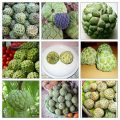
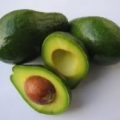

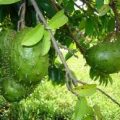
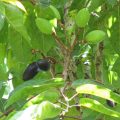
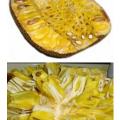

Thanks for your marvelous posting! I quite enjoyed reading it, you may be a great author.
I will always bookmark your blog and definitely will come back from now on. I want to encourage you to definitely continue your great writing,
have a nice afternoon!